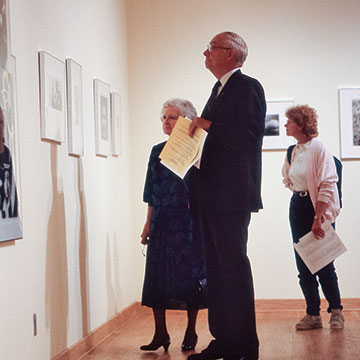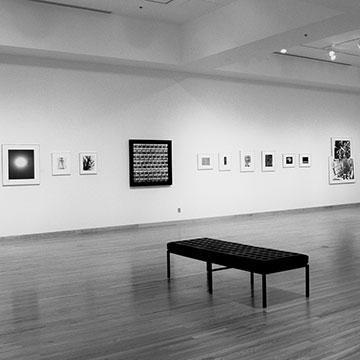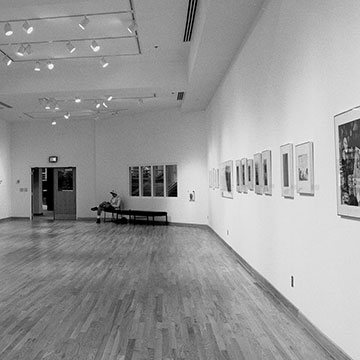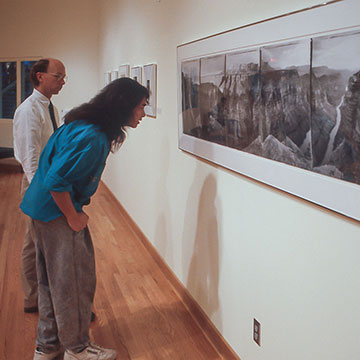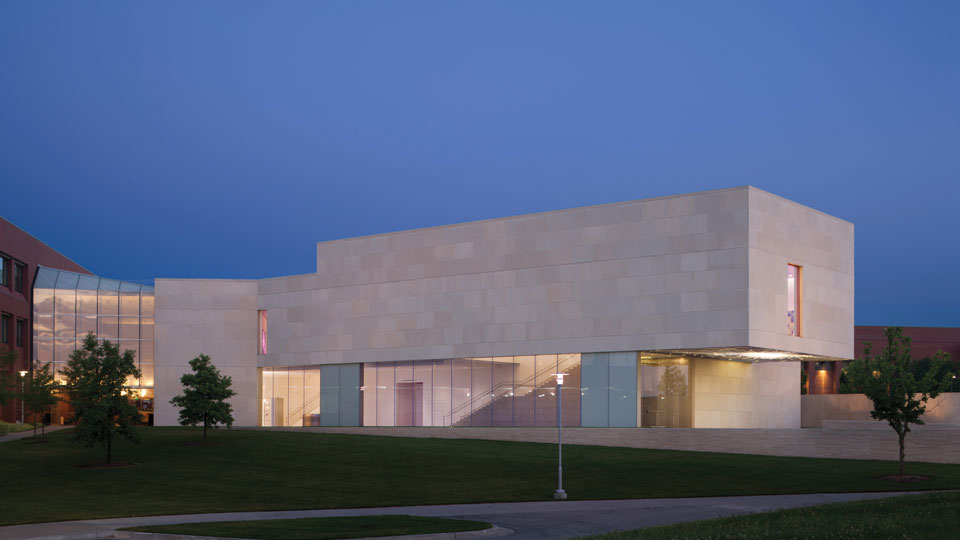Transformations
The Traditions of Modern Photographic Abstraction and Experimentation from the Hallmark Photographic Collection
The Gallery of Art in the Carlsen Center, Johnson County Community College’s new performing arts center, will open its doors for the first time with an exhibition of 20th-century photographs from the prestigious Hallmark Photographic Collection. The exhibition of 55 photographs, taken during the early 1920s to present, was organized by Keith Davis, curator of the Hallmark Art Collection. “Throughout its 150-year history, photography has been used to both document and invent the world,” Davis said. “These seemingly antithetical operations usually happen at the same time and in every photograph. These works from the Hallmark Photographic Collection survey some of the ways 20th-century photographers have used light-sensitive materials in ways other than strictly documentary.”
The exhibition is an ideal choice to inaugurate the new gallery. The Hallmark Collection is one of the finest in the United States. Davis has put together an exhibition that challenges people’s preconceived notions of photographs. The works in the exhibition are not a straightforward representation of reality; rather, the artists have used abstraction to present personal visions of the world. Thematic groupings within the exhibition include soft focus; the figure (manipulations and reinterpretations); multiple prints/collage; vantage point; optical effects (reflections, solarization); photograms; mechanical manipulations (multiple exposures, Widelux distortion); high contrast; nature as subject; scale ambiguities; manipulated/reconstructed images; multiple image; hand colored; drawn or painted images; the constructed subject; and conceptual.
Begun in 1964, the Hallmark Photographic Collection contains nearly 2,200 original museum-quality prints by the leading photographers of the 20th century. In the past decade more than 40 different exhibitions have been organized in leading museums and university galleries throughout the United States and in Canada, Australia, New Zealand and Great Britain. It is a project of Hallmark Cards Inc., Kansas City, Missouri.
Artists included:
John Baldessari
Thomas F. Barrow
Herbert Bayer
Zeke Berman
Margaret Bourke-White
Bill Brandt
Nancy Burson (with Richard Carling and David Kramlich)
Harry Callahan
JoAnn Callis
Henri Cartier-Bresson
Linda Connor
Ralston Crawford
Imogen Cunningham
Jed Devine
Rick Dingus
Harold Edgerton
Grancel Fitz
Robbert Flick
Adam Fuss
William Garnett
Ralph Gibson
Emmet Gowin
Johan Hagemeyer
Robert Heinecken
Florence Henri
Rick Hock
Henry Holmes Smith
Lotte Jacobi
Ken Josephson
Gyorgy Kepes
Andre Kertesz
Mark Klett
David Levinthal
Ray Metzker
Duane Michals
Laszlo Moholy-Nagy
William Mortenson
Patrick Nagatani and Andree Tracey
Edward Quigley
John Pfahl
Susan Rankaitis
Holly Roberts
Lucas Samaras
Arthur Siegel
Aaron Siskind
Frederick Sommer
Michael Spano
Edward Steichen
Joe Sterling
Paul Strand
Val Telberg
Ruth Thorne-Thomsen
Jerry Uelsmann
Edward Weston
Minor White

